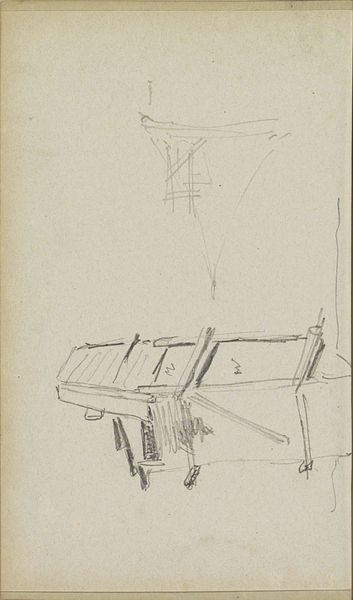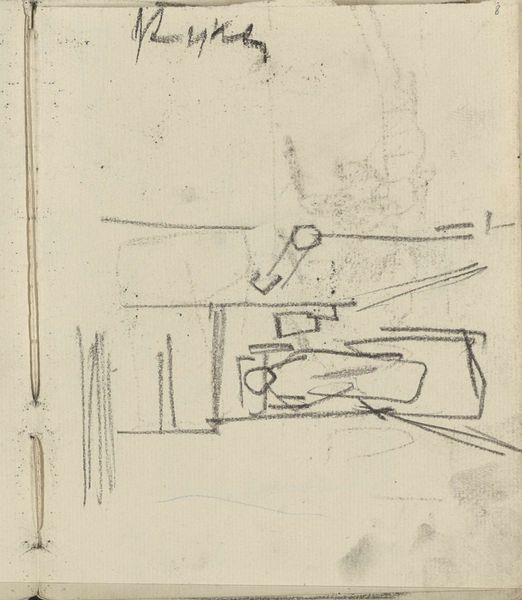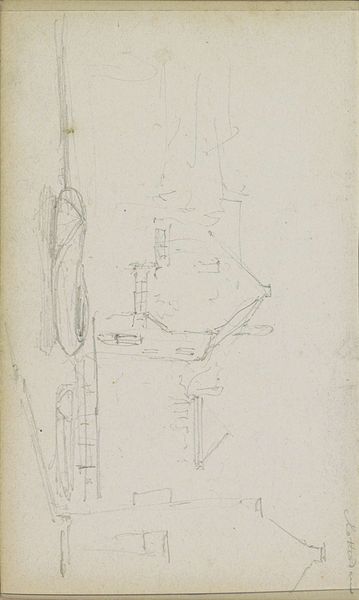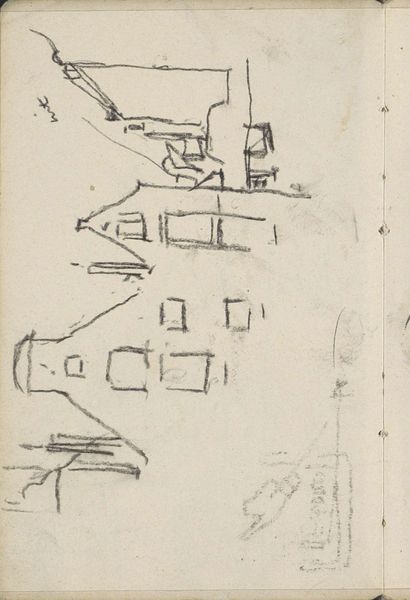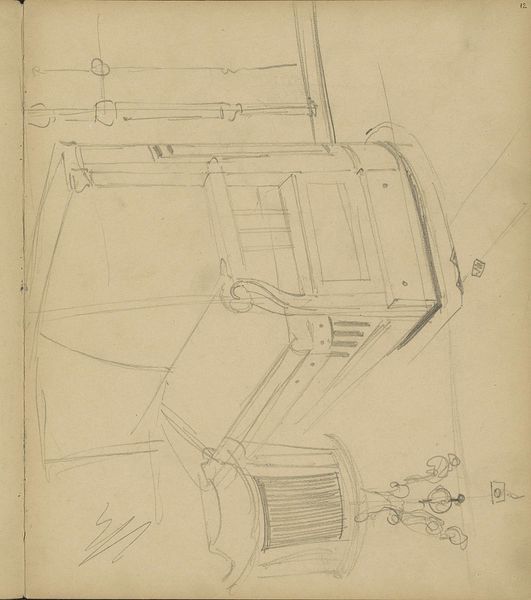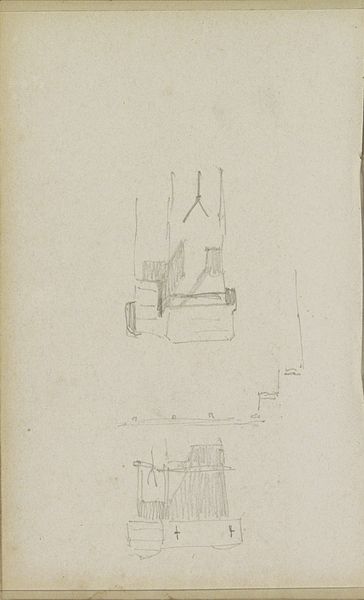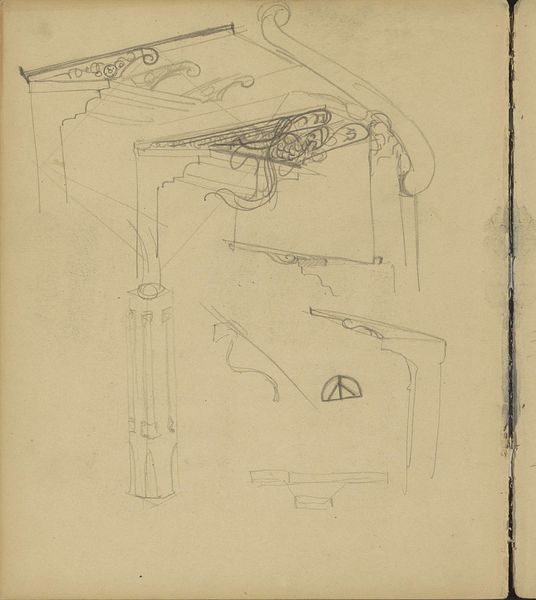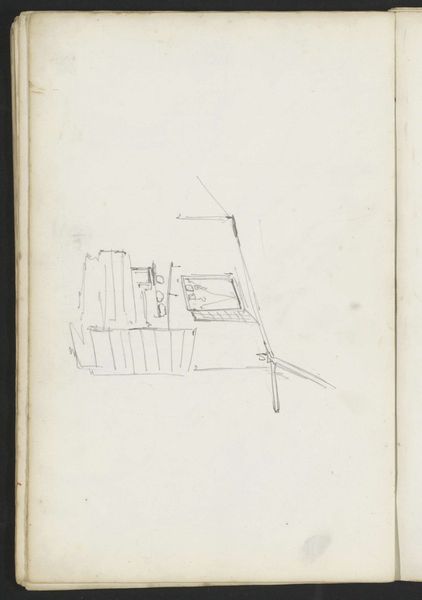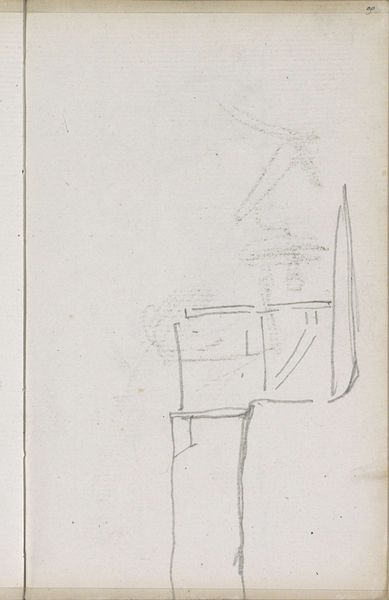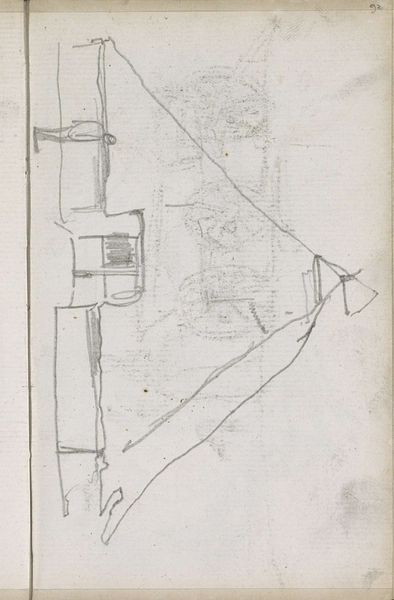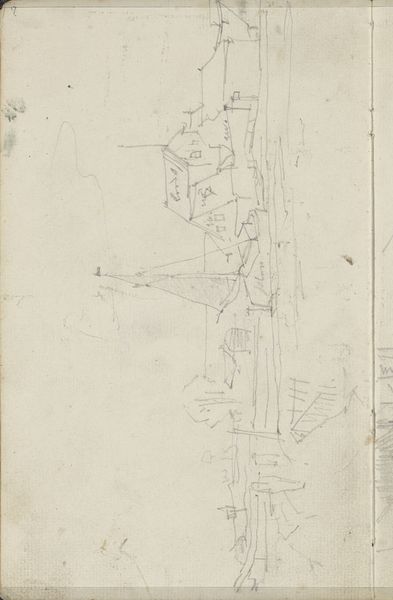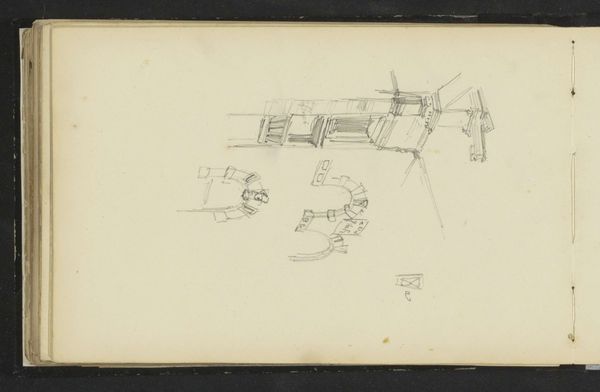
drawing, paper, pencil
#
drawing
#
paper
#
geometric
#
pencil
#
cityscape
#
modernism
Copyright: Rijks Museum: Open Domain
Editor: Here we have Adrianus Eversen's "Architectuurstudies," a pencil drawing on paper made sometime between 1828 and 1897. The architectural sketches have a very light, ephemeral feel to them. What can you tell me about how the architectural elements are symbolic here? Curator: These studies are less about specific structures, and more about the enduring human fascination with form and order. Consider the geometric shapes, how they imply a reach towards something monumental. What do these incomplete structures evoke for you – a feeling of something still to be built, perhaps? Editor: Yes, I see what you mean. It’s like looking at possibilities rather than finished works. The eye jumps from sketch to sketch trying to imagine how the building should come to be. It definitely is a future tense rather than a past. Curator: Exactly. It speaks to our cultural memory of building, of creating lasting forms. Eversen isn’t just sketching buildings; he is tapping into something much older, something archetypal. Do you notice the way the artist layers different views? It reminds me of architectural palimpsests. Editor: Like a built-up sense of layers of lives, eras even? What does that visual accumulation suggest to you? Curator: I see it reflecting the cyclical nature of civilizations. Buildings rise, fall, are rebuilt. The sketch becomes a container for our shared architectural consciousness, if you will. What is particularly poignant is the bare medium: pencil. Something as simple as that allows Eversen to evoke such an expansive idea about human creativity, especially because it is such a direct medium. Editor: That’s fascinating. I hadn’t considered the cyclical aspect before, but I can see how the fragmented style speaks to that ongoing process of creation and recreation. I will carry that idea of buildings holding our architectural consciousness as I look at art from now on.
Comments
No comments
Be the first to comment and join the conversation on the ultimate creative platform.
